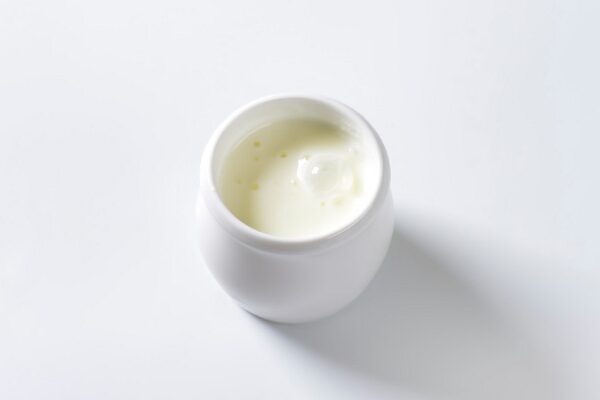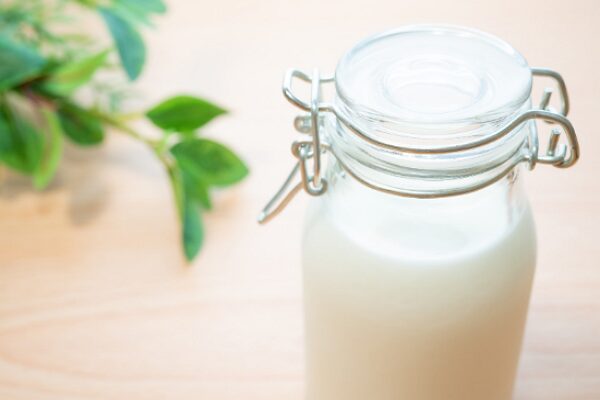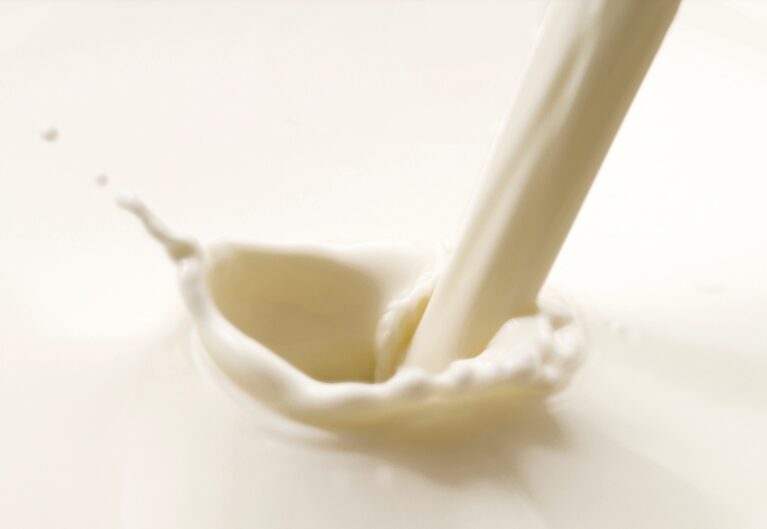Whether you’re whipping up a delectable dessert or adding a creamy touch to your favorite savory recipes, evaporated milk has long been a go-to ingredient for its unique texture and flavor. However, what happens when you find yourself in need of an evaporated milk substitute due to dietary preferences, lactose intolerance, or simply an empty pantry? Don’t worry, as the world of culinary alternatives is full of options to rescue your recipes and unleash your creativity.
In this article, we delve into the realm of evaporated milk substitutes, exploring a range of dairy and non-dairy options that can seamlessly step in and deliver comparable results. I’ll guide you through a variety of choices to suit different dietary needs and taste preferences.
Discover how these substitutes can bring their own unique characteristics to the table, elevating your culinary creations to new heights. Get ready to explore the world of evaporated milk substitutes and unlock the creation of possibilities in your kitchen.
How Is Evaporated Milk Made?

Evaporated milk is a type of milk product that has had about 60% of its water content removed through evaporation. This process helps to preserve the milk and extend its shelf life. Here’s a general overview of how evaporated milk is made:
1. Milk Source
Fresh cow’s milk is typically used to make evaporated milk. The milk undergoes quality checks to ensure it meets the required standards.
2. Heating
The milk is then heated in a large, shallow pan or evaporator. The heating process is usually done under low pressure, which helps to reduce the boiling point of the liquid.
3. Evaporation
As the milk heats up, the water content starts to evaporate. The pan is designed in a way that maximizes the surface area of the milk exposed to heat, allowing for faster evaporation.
4. Continual Stirring
Throughout the process, the milk is continuously stirred to prevent it from scorching or forming a skin on the surface.
5. Temperature Control
The temperature is carefully controlled during the evaporation process to ensure that the milk doesn’t boil or burn. This gentle heating helps preserve the flavor and nutritional properties of the milk.
6. Cooling
Once the desired amount of water has evaporated, the heat is turned off, and the milk is allowed to cool.
7. Homogenization
The evaporated milk is then homogenized, which helps to break down any remaining fat globules and create a smooth, uniform texture.
8. Packaging
The evaporated milk is packaged in cans or other airtight containers, which helps to maintain its freshness and extend its shelf life. The cans are then sealed and typically sterilized to ensure the product’s safety.
The Difference Between Evaporated Milk & Condensed Milk
Evaporated milk and condensed milk are two popular dairy products that differ in their production and flavor profiles. Evaporated milk is made by removing about 60% of the water content from fresh milk, creating a thick and creamy liquid. It has a rich and slightly caramelized taste, making it a great addition to coffee, tea, or desserts.
On the other hand, condensed milk is made by removing water from milk and adding sugar, resulting in a thick, sweet, and sticky consistency. It is commonly used in baking and dessert recipes, providing a distinct sweetness and contributing to a creamy texture.
Best Evaporated Milk Substitute

If you’re looking for substitutes for evaporated milk, here are a few options:
Homemade Evaporated Milk
You can make your own evaporated milk by simmering regular milk on low heat until it reduces by about half. This method works well if you have regular milk on hand and don’t need the exact consistency of canned evaporated milk.
Coconut Milk
Coconut milk is a popular dairy-free substitute for evaporated milk. It has a creamy texture and a slightly sweet flavor. You can use it in a 1:1 ratio as a substitute in recipes that call for evaporated milk.
Soy Milk
Soy milk is another non-dairy alternative that can be used as a substitute for evaporated milk. Like coconut milk, you can use it in a 1:1 ratio in recipes.
Cashew Cream
Cashew cream is a homemade alternative made by blending soaked cashews with water until smooth and creamy. It has a rich texture and can be used as a substitute for evaporated milk in many recipes.
Almond Milk
Almond milk is a popular dairy-free milk alternative. While it may not be as thick and creamy as evaporated milk, it can still be used in recipes as a substitute. Keep in mind that it may impart a slightly nutty flavor to your dishes.
Oat Milk
Oat milk is another plant-based milk that can be used as a substitute for evaporated milk. It has a slightly sweet and oaty flavor and a creamy consistency. Use it in a 1:1 ratio as a replacement in recipes.
Half-and-Half
As half and half and evaporated milk are comparable in texture and fat content, half and half may be the best, slightly richer, evaporated milk substitute of the bunch. You can use a 1:1 substitution of half and half for evaporated milk.
Powdered Milk
Powdered milk is a type of preserved milk created by evaporating and spray-drying ordinary milk. As a result, a long-lasting, nutritious milk substitute is created. You can make evaporated milk by combining 1 cup of powdered milk with 1.5 cups of warm water and stirring until the powdered milk is completely dissolved. The water will thicken to the consistency of the substance found inside the can of evaporated milk.
Heavy Cream
You can also use heavy cream as a substitute for evaporated milk. The end result may be a little extra decadent, but that’s not always a bad thing. If you have milk on hand, make half-and-half by combining half milk and half heavy cream.
What to Consider when Choosing Evaporated Milk Substitute?

There are a few things to consider when looking for a substitute for evaporated milk in a recipe. Here are a few essentials to remember:
- Consistency: When selecting a substitute, look for ingredients or alternatives that can provide a similar thickness and richness to your dish.
- Fat content: If you’re aiming to replicate the richness, consider using a substitute that has a similar fat content. You can choose whole milk, heavy cream, or even a combination of milk and cream.
- Dairy vs. Non-dairy: Depending on dietary restrictions or personal preferences, you might need to find a substitute that is dairy-free. In such cases, you can explore non-dairy options like coconut milk, almond milk, or soy milk. Remember that non-dairy alternatives might impart a slightly different flavor to your dish.
- Cooking Method: Consider the cooking method used in your recipe. Some substitutes may not be suitable for high-heat cooking or prolonged simmering. Make sure the substitute you choose can withstand the cooking process without curdling or separating.
FAQs
Can I use non-dairy milk as a substitute for evaporated milk?
Yes, you can use non-dairy milk as a substitute for evaporated milk. Non-dairy options such as soy milk, almond milk, or oat milk can be used in the same quantity as evaporated milk in most recipes.
Can I use condensed milk as a substitute for evaporated milk?
While condensed milk and evaporated milk are both types of canned milk, they are not similar. Condensed milk is sweetened and has a much thicker consistency due to the addition of sugar. It is not a suitable substitute for evaporated milk in most recipes.
How does substituting evaporated milk affect the taste and texture of a dish?
Substituting evaporated milk may alter the taste and texture of a dish to some extent. Using a substitute like regular milk or non-dairy milk may result in a lighter flavor and less creamy texture. Cream or half-and-half can help retain some of the richness, while coconut milk can add a different flavor profile.
Are there any vegan substitutes for evaporated milk?
Yes, there are vegan alternatives to evaporated milk that you can use. Non-dairy milk like soy milk, almond milk, cashew milk, or oat milk can be used as substitutes. Look for unsweetened varieties to maintain the neutrality of the flavor. Coconut milk or coconut cream can also be used for a richer, tropical flavor in vegan recipes.
Are evaporated milk substitutes allergen-friendly?
Evaporated milk substitutes made from plant-based milk are generally allergen-friendly and suitable for those with lactose intolerance, dairy allergies, or dietary restrictions. But, some individuals may have specific allergies or sensitivities to certain plant-based ingredients, so it’s important to check the labels and ingredients before use.
Can I freeze evaporated milk substitutes?
Freezing evaporated milk substitutes may alter their texture and consistency. It is generally not recommended, as they may separate or become grainy upon thawing.
The Bottom Line
The exploration for a suitable substitute for evaporated milk has resulted in a variety of options that offer versatility and cater to different dietary requirements. From coconut milk to soy milk and even homemade versions using milk powder, these alternatives provide viable solutions for individuals who are lactose intolerant, allergic to dairy, or follow a vegan lifestyle.
While they may not precisely replicate the exact taste and texture of evaporated milk, they offer comparable creaminess and can be used in a wide range of recipes, from soups and sauces to desserts and beverages. These substitutes allow individuals to enjoy the benefits of evaporated milk without compromising their dietary needs or preferences.

